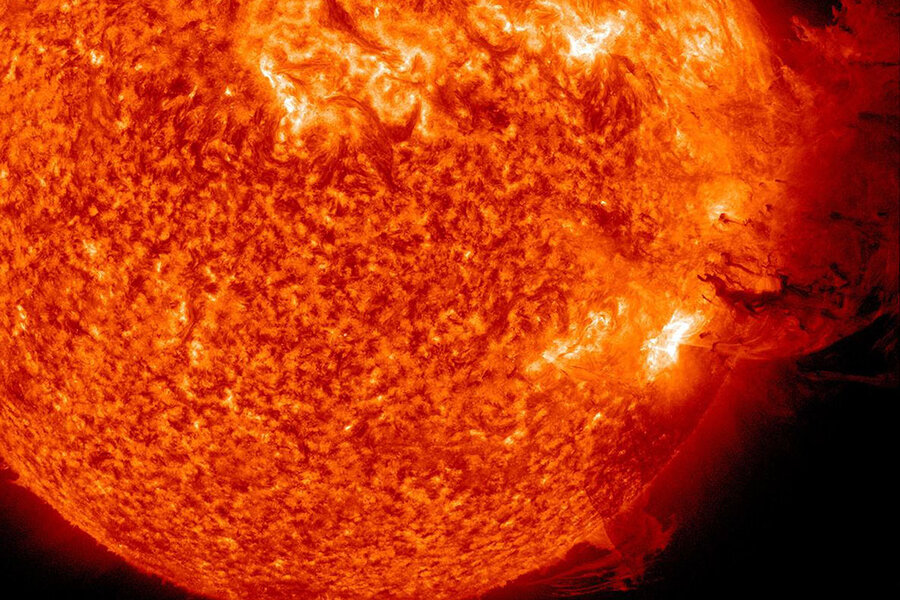How a new space weather forecaster could help protect astronauts
Loading...
Solar storms often roil the surface of Earth’s star, but their effects are rarely limited to that body alone; rather, they can send deep punches of energy blazing out into space.
Of these, the most powerful is known as a coronal mass ejection (CME), millions of tons – even a billion – of protons and electrons hurtling from the sun. While Earth’s atmosphere and magnetic field offer protection from the most dangerous effects of these and other forms of space weather, astronauts out in space are more vulnerable.
It is for this reason that a newly developed technique promising earlier warning of these solar events could provide such a critical contribution to future space travel.
“Robotic spacecraft are usually radiation-hardened to protect against these kinds of events,” said Chris St. Cyr, a space scientist at NASA’s Goddard Space Flight Center, in a press release. “But humans are still susceptible.”
Most space-weather research is done using space-based satellites, a big advantage of which is the absence of interruption by cloud cover. Aside from this limitation, however, ground-based instruments are able to offer a much higher time resolution than their space-bound colleagues – and they have the added benefit of being able to return data almost instantly.
Given that solar energetic particles, which are associated with CMEs, move so quickly, anything that can be done to shave time off the transmission and analysis of data is vital.
“With space-based coronagraphs, we get images back every 20-30 minutes,” said Sr. St. Cyr, who was also the study’s lead author. “You’ll see the CME in one frame, and by the time you get the next frame – which contains the information we need to tell how fast it’s moving – the energetic particles have already arrived.”
A coronagraph works by blocking out the bright face of the sun, thereby allowing observation of the wispy tendrils that surround it, the corona. In the latest research, astronomers using K-Cor, a coronagraph that perches atop Hawaii’s Mauna Loa volcano, were able to show that the information needed to predict the energy particles’ arrival was available about 45 minutes before they slammed into the Earth, tens of minutes before they even left the sun’s inner atmosphere.
The idea, assuming that repetitions of this study yield similar conclusions, is to couple the new technique with faster transfer of images online, providing a near real-time picture of space weather, similar to the service provided by the US National Oceanic and Atmospheric Association for Earth’s own weather.








